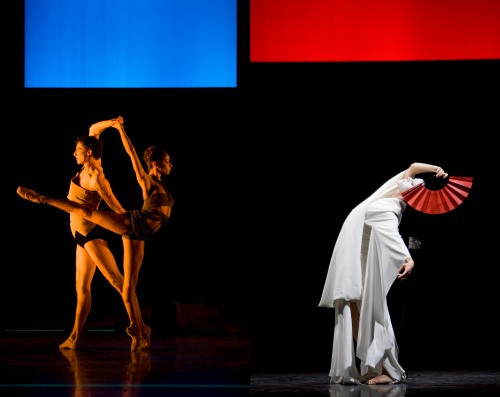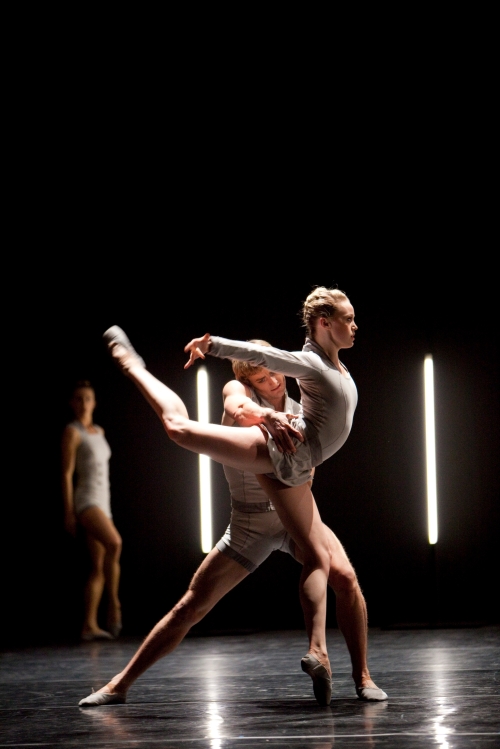
As we prepare to send off 2009 and embrace a new decade, we look back into what was hot, fun & fab around the ballet blogosphere to pick our favorite things this year. Feel free to share yours too.
Favorite Blog Posts
Haglund Heel’s “ABT needs a Mayerling” campaign
The coolest ballet campaign of the year. We keep on crossing our fingers & sending positive vibes for Mayerling to be part of ABT’s repertory someday. We’d definitely cross the Atlantic to see Marcelo Gomes as Crown Prince Rudolf.
You Dance Funny on the mess with “Swan Lake’s third act Pas de Deux”
We love uncovering mysteries à la Sherlock Holmes / Dr. Gregory House. Divalicious prima ballerina decides she doesn’t like the score for her Swan Lake 3rd Act solo and asks Ludwig Minkus to write another one. This in turn bothers the original composer, a certain Mr. Tchaikovsky, who then writes a second version which never makes it to the final cut after all. Complicated? This could very well yield material for a soap opera.
Bloggerina meets Mr. Clement Crisp
Once upon a time our favorite ballet critic, Mr. Clement Crisp, went on a trip to Canada to see a triple bill composed entirely of new ballets, something sadly unthinkable in our neck of the woods. He met the Toronto ballet audience & spoke about what can be done to ensure the future of ballet. We were left very jealous…
Bella Figura’s Make your own Ballet Xmas in Paris
While Eurostar #FAIL would have surely prevented us from celebrating a balletic Xmas in Paris this year, this post provided us a much needed insight into the pick and mix of POB‘s casting. We are very curious about the darkest of all Nutcrackers and we might be more than tempted next December when the Mariinsky will also be in town. The post also offers a witty description of a certain Bolshoi star who has a habit of hanging on to theatre curtains.
Demicontretemps’s “If Ballet Stars were comic book heroes”
We love graphic novels, comic books and movie adaptations of both. We also often imagine deathmatches between our favorite ballet stars… if only we could pitch this idea to MTV. In this very funny post Eric Taub imagines Ballet dancers as drawn by famous comic book artists.
Veronika Part on Wolcott and Swan Lake Samba Girl
She is one of the most glamorous things to have happened to ballet. Just as gossip started to circulate that she would leave ABT she turned the tables on the rumour mill and bagged a promotion for Principal and a spot on David Letterman. May she long continue to fascinate us.
Favorite Tweets/Social Media Stuff
Sanjoy Roy on How dance companies must embrace the internet. The Guardian dance writer Sanjoy Roy picks up on the Ketinoa debate.
Hedi Slimane’s short film featuring Royal Danish Ballet’s Oscar Nielssen rocking and phrasing beaten steps to the music of Supershine drummer Matthias Sarsgaard. We said it before and will say it again: Ballet Rocks! (as tweeted by @hedislimanetwit)
Crankocast – Who would you be cast as in a Cranko ballet? Over here we got the two Taming of the Shrew sisters, one for each Bag Lady. Spooky! How did they know? (as tweeted by Stuttgart Ballet Principal dancer @EvanMcKie)
Charlotte MacMillan’s Mayerling photos at The Arts Desk – breathtakingly sinister studio shots of one of our favorite dark ballets with one of our favorite casts (as tweeted by @Macmillanballet)
Mariinsky in Japan Little Humpbacked Horse photos – mouthwatering candy store-like pictures of the Ratmansky ballet we are dying to see (as tweeted by the lovely @naomip86 – our Japanese ballet guru)
Favorite Ballet Bag Stuff
Interviews – Three fabulous leading dancers with each of the Mariinsky, the Royal Ballet and ABT. Three very distinct personalities which resulted in very different interviews. We hope you enjoyed them as much as we did. We are crossing our fingers for more.
Bridge Over Troubled Water & other Social media posts – We are big believers in the power of social media. All of these posts were great fun to write & some even managed to stir some controversy (see Sanjoy Roy article above).
Supermassive Black Hole – Our resident physicist analysed BRB’s new ballet based on Einstein’s Theory of Relativity. Perfect for the job.
Grace – This was a tough cookie. Someone asked in our Facebook group if we could write something about the ballerina’s grace. It was hard to put a subjective concept into words but we really liked the final product, not least because it gave us a chance to quote from Pride and Prejudice.
Last but not least
Our favorite Dances of the Decade
Our favorite Dance articles of 2009 (Conventional Media)
















